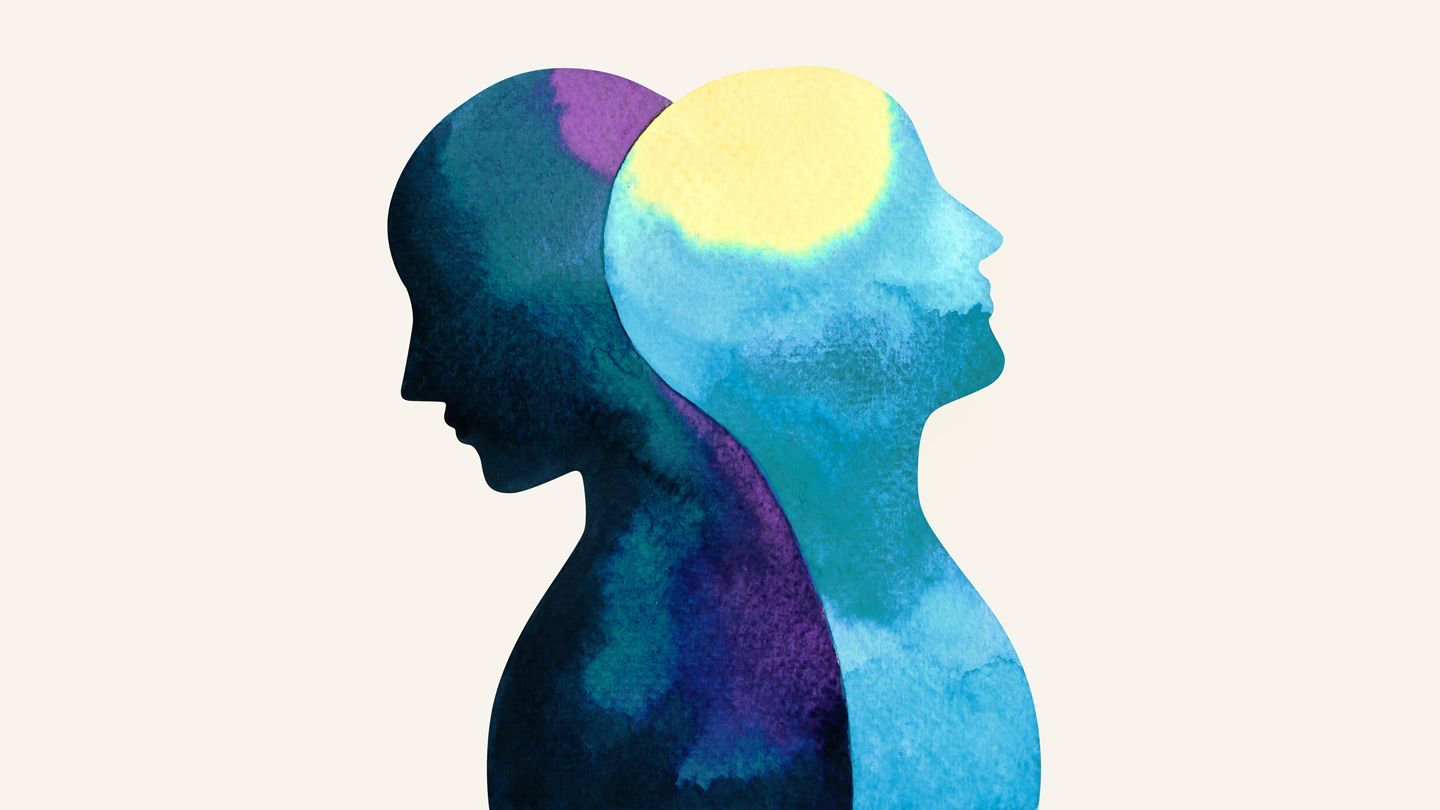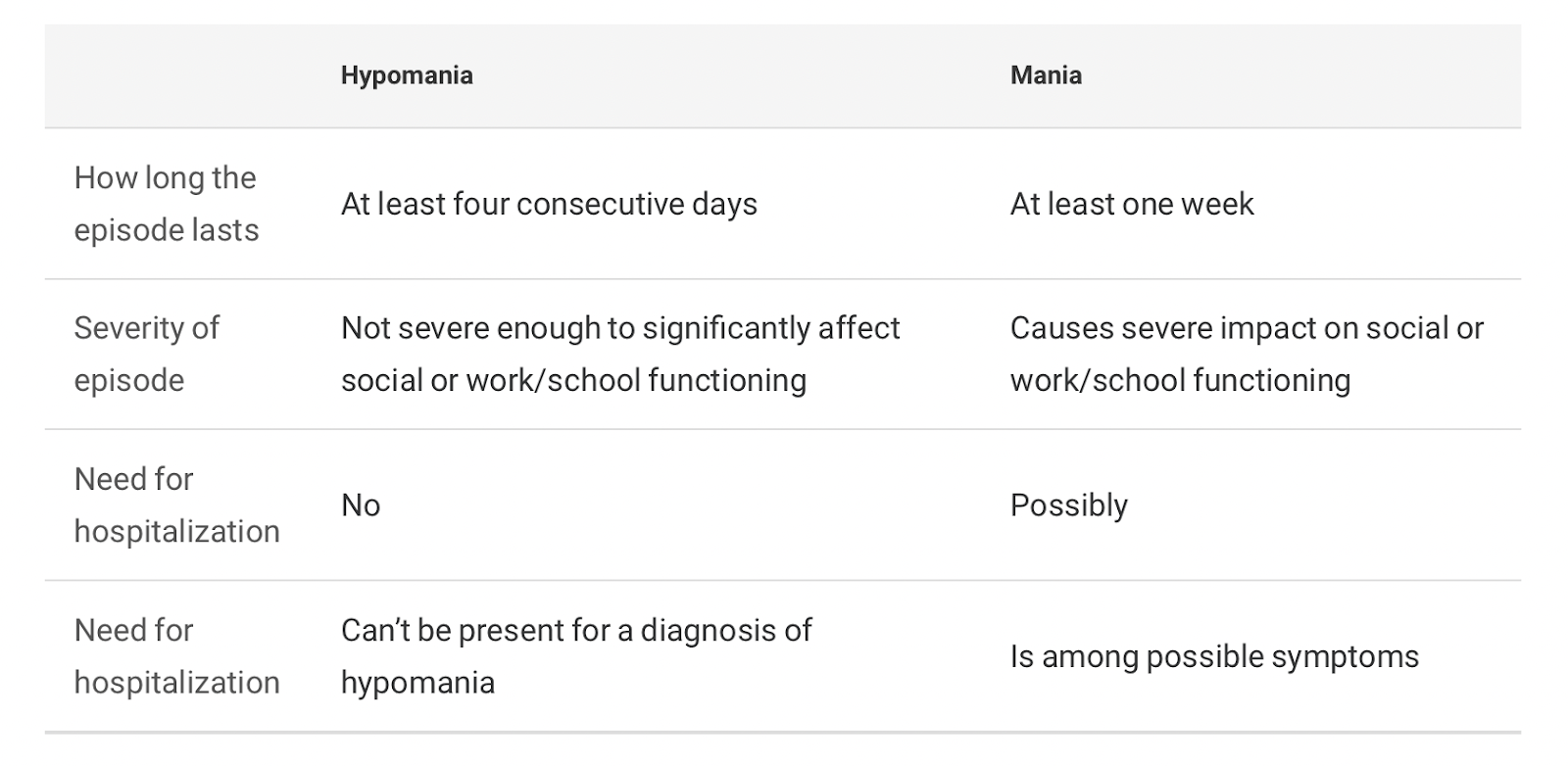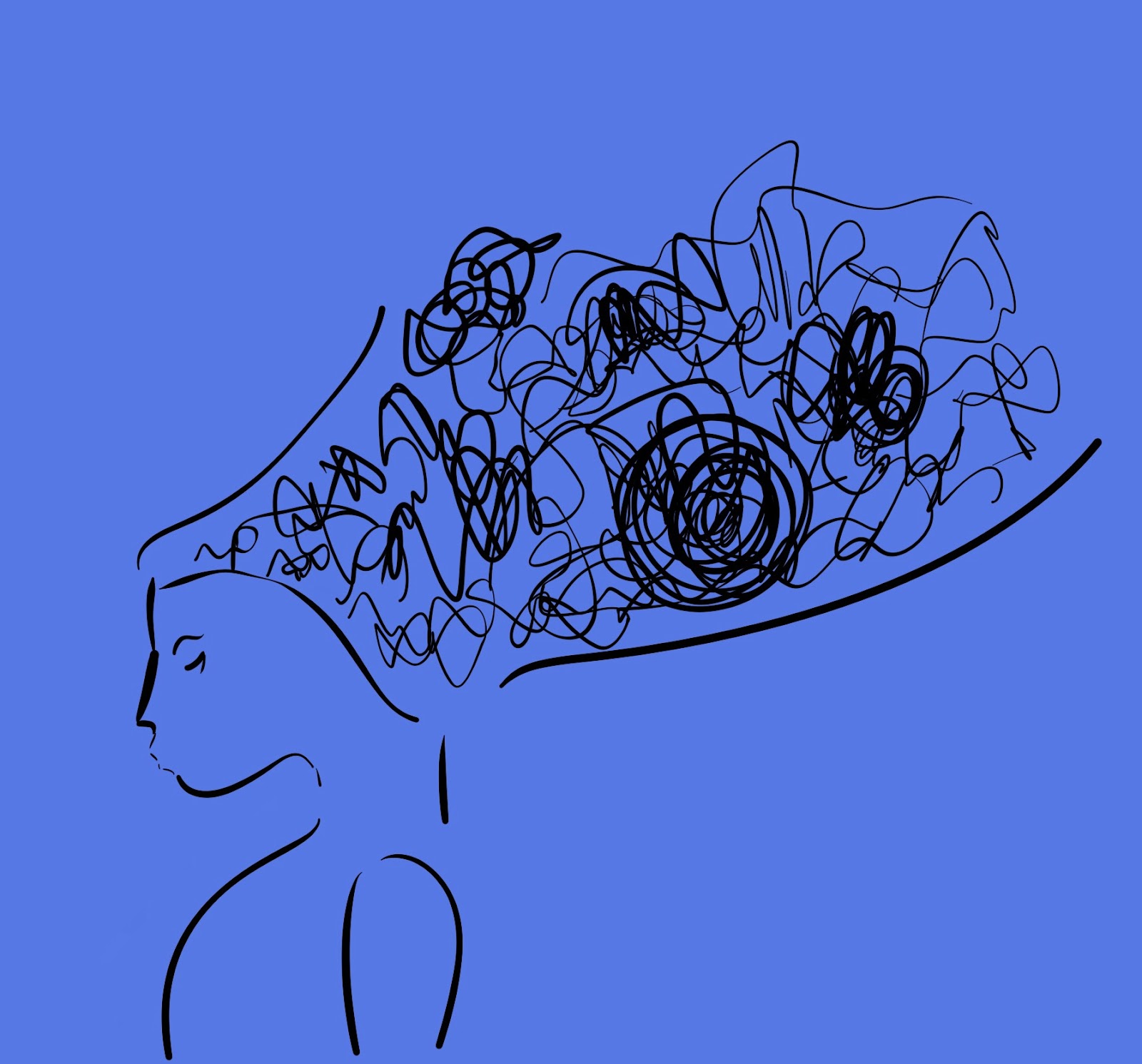Bipolar Disorder
By BRANDON NGUYEN

Bipolar disorder is noted to have drastic changes between a manic and depressed state
Benjavisa Ruangvaree/Adobe Stock
What is bipolar disorder?
Bipolar disorder, previously known as manic depression, is a mental health condition that causes mood to swing between depression and mania.
When bipolar patients are in a depressive phase, they often experience symptoms including extreme sadness, hopelessness, or indifference. During their manic episodes, they often feel symptoms of euphoria, recklessness, or high energy.
Types of bipolar disorder
Bipolar I disorder: To be diagnosed, patients must have had at least one manic episode in their life, and these episodes must persist for >7 days, or be so severe that hospitalization is required. Experiencing a depressive episode is not needed for diagnosis, but often accompanies manic episodes in a bipolar I patient.
Bipolar II disorder: Bipolar II patients experience the same fluctuations in mental state as bipolar I disorders, but the manic episodes are generally weaker in strength, and are considered hypomanic. However, bipolar II may be just as debilitating to daily life due to the generally stronger depressive episodes apparent in bipolar II patients.
Cyclothymic disorder: Patients with cyclothymic disorder have chronically fluctuating mood states. They may experience hypomanic and/or mildly depressive episodes that last for >2 years. People diagnosed with cyclothymia may experience short periods of stable mood (euthymia) but rarely last over 8 weeks.
What exactly are mania and depression?
Mania

Mania is defined by a period of abnormally elevated emotions. Examples of elevated feelings include happiness, irritability, and recklessness. As a result, manic episodes can result in rash or harmful decision-making. Mania can be triggered due to factors including fluctuations in stress levels, life-changing events, and substance abuse.
Symptoms of mania include:
Abnormally high activity levels
Feelings of euphoria and elevated happiness/excitement
Having an inflated self-esteem, feelings of invincibility
Speaking very quickly and at higher rates than usual
Feeling energized despite lack of sleep
Spending money excessively without thought of cost
Racing thoughts, being easily distracted or sidetracked
Highly impulsive behavior
Recklessness
Losing social inhibitions
The three major stages of mania (from weakest to strongest) are: hypomania (Stage I), acute mania (Stage II), and delirious mania (Stage III). Patients diagnosed with bipolar disorder experience a form of mania known as “acute mania.” Acute mania is the standard diagnosis for mania that can include all of the general symptoms of mania. Note that hypomania, although diagnosed as a separate disorder from mania, is extremely similar in symptoms. However, hypomania is weaker overall in degree of behavior changes. Delirious mania patients experience the same symptoms of acute mania, but also experience delirium (a temporary disconnect from reality and reduced awareness of surroundings).
Table of the general differences between mania & hypomania
 my.clevelandclinic.org/health/diseases/21774-hypomania
my.clevelandclinic.org/health/diseases/21774-hypomania
Depression
Depression is a mood disorder defined by lower interest in daily activities as well as strong feelings of sadness or despondency. Examples of depressive feelings include sadness, hopelessness, worthlessness, and frustration. Depression can be triggered due to factors including fluctuations in stress levels, life-changing events, and substance abuse.

Symptoms of depressions include:
Persistent sadness or anxiety
Loss of interest in almost all activities that were previously considered pleasurable or enjoyable
Fatigue and/or slowed behavior
Either insomnia or hypersomnia
Suicidal thoughts or tendencies
Self-harm
Decreased sociability
Feelings of worthlessness or hopelessness
Changes in appetite and/or weight
Difficulty concentrating on tasks, remembering past events, or making decisions
Unexplained physical ailments, such as headaches or back pain
Diagnosis of Bipolar Disorder
Proper diagnosis and treatment routes provided by medical professionals can improve the symptoms of bipolar disorder. By talking with a licensed medical professional or a healthcare provider, patients can receive proper instructions on how to improve their bipolar symptoms.
Medical practitioners can use a variety of tests to improve the reliability of bipolar disorder diagnoses. For example, many doctors will request for patients to fill out a mood checklist or questionnaire to gain a preliminary assessment. In addition, other tests including toxicology tests with urine or blood samples will often be requested in order to rule out other possible causes of symptoms.
Other possible causes of the symptoms similar to bipolar disorder include:
Substance use disorders
Borderline personality disorder
Conduct disorders
Impulse control disorders
Developmental disorders
Attention deficit hyperactivity disorder
Certain anxiety disorders such as post-traumatic stress disorder
Oftentimes, although medical tests can be conducted to analyze a patient’s level of health, it is generally not the most effective (or only) method of diagnosing bipolar disorder. Doctors will usually request a list of symptoms experienced by the patient in their daily lives, as well as testimony from a loved one, or someone who is in close contact with the patient on a daily basis. According to the National Institute of Mental Health, “Mental health care providers usually diagnose bipolar disorder based on a person’s symptoms, lifetime history, experiences, and, in some cases, family history.”
Bipolar Disorder Alongside other Medical Conditions
Many bipolar disorder patients will also experience a variety of other mental health related disorders. These conditions include ADHD (attention deficit hyperactivity disorder), anxiety disorders, substance abuse disorders, eating disorders, or psychosis. Psychosis ties in more prominently with the symptoms of bipolar disorder, as patients diagnosed with both psychosis and bipolar disorder may experience delusions or hallucinations that match the patient’s mood swing. For example, during a manic episode, people with bipolar disorder may feel falsely invincible or powerful, while during a depressive episode, these same people may falsely feel like they are being gossiped about by their peers.
Treatment
Treatment of bipolar disorder can possibly improve the lives of many patients, even those with extreme forms of the mental disorder. However, bipolar disorder is a lifelong illness. Although treatment may drastically improve or lessen the symptoms accompanying bipolar disorder, it does not fully eliminate the cause. Long-term treatment can help people manage their symptoms.
Although psychotherapy (treatment through identifying and changing behavioral problems with a psychiatrist) is a possible method of improving the symptoms of bipolar disorder, medications can also be used to improve bipolar patients’ treatment. The overall treatment of bipolar disorder using medications is approached by treating, in turn, the manic episode first, and then the depressive episode through two primary stages: acute treatment and maintenance treatment.
Acute Treatment
Manic episode: Involves the administration of either a mood stabilizer (i.e. lithium, valproate), an antipsychotic (i.e. olanzapine, risperidone), or a
combination of both a mood stabilizer and an antipsychotic.
Depressive episode: Involves the administration of an antidepressant (i.e. fluoxetine, sertraline), but only after ensuring that the episode is strong enough that antidepressant medication is needed, and that the patient is already on antimanic drugs. This is because the use of antidepressants may lead to a precipitative (induced) manic episode after the symptoms of the depressive episode are treated.
Maintenance Treatment
Both manic and depressive episodes: Once the patients become asymptomatic or are showing negligible mood fluctuations in their respective episodes, the use of medications is tapered off to a lower level over the course of a few weeks, or replaced with a new medication. Most bipolar patients will be in the maintenance treatment phase over the majority of their lives.
Life Outlook for Bipolar Patients
Although people with bipolar disorder will remain affected by the medical condition for life, proper treatment and diagnosis can be beneficial for keeping the symptoms of manic and depressive episodes to a minimum. Most patients undergoing successful treatment will be able to lead generally normal lives.
Citations
Bipolar disorder (DSM-IV-TR #296.0–296.89) . (n.d.). Retrieved October 20, 2022, from www.brown.edu/Courses/BI_278/Other/Clerkship/Didactics/Readings/Bipolar%20Disorder.pdf
Bipolar disorder in adults: Choosing maintenance treatment. UpToDate. (n.d.). Retrieved October 19, 2022, from www.uptodate.com/contents/bipolar-disorder-in-adults-choosing-maintenance-treatment
Causes of hypomania and Mania. Mind. (n.d.). Retrieved October 19, 2022, from www.mind.org.uk/information-support/types-of-mental-health-problems/hypomania-and-mania/causes/
Hypomania: What is it, comparison vs mania, symptoms & treatment. Cleveland Clinic. (n.d.). Retrieved October 19, 2022, from my.clevelandclinic.org/health/diseases/21774-hypomania
Lee, B.-S., Huang, S.-S., Hsu, W.-Y., & Chiu, N.-Y. (2012, June 21). Clinical features of delirious mania: A series of five cases and a brief literature review. BMC psychiatry. Retrieved October 19, 2022, from www.ncbi.nlm.nih.gov/pmc/articles/PMC3503657/
Mania: What is it, causes, triggers, symptoms & treatment. Cleveland Clinic. (n.d.). Retrieved October 19, 2022, from my.clevelandclinic.org/health/diseases/21603-mania
Mayo Foundation for Medical Education and Research. (2021, February 16). Bipolar disorder. Mayo Clinic. Retrieved October 19, 2022, from www.mayoclinic.org/diseases-conditions/bipolar-disorder/symptoms-causes/syc-20355955
Mayo Foundation for Medical Education and Research. (2022, October 14). Depression (major depressive disorder). Mayo Clinic. Retrieved October 19, 2022, from www.mayoclinic.org/diseases-conditions/depression/symptoms-causes/syc-20356007
U.S. Department of Health and Human Services. (n.d.). Bipolar disorder. National Institute of Mental Health. Retrieved October 19, 2022, from www.nimh.nih.gov/health/topics/bipolar-disorder
U.S. Department of Health and Human Services. (n.d.). Depression. National Institute of Mental Health. Retrieved October 19, 2022, from www.nimh.nih.gov/health/topics/depression
WebMD. (n.d.). Bipolar disorder diagnosis: How doctors diagnose BPD. WebMD. Retrieved October 19, 2022, from www.webmd.com/bipolar-disorder/guide/bipolar-disorder-diagnosis
WebMD. (n.d.). Bipolar I disorder symptoms, treatments, causes, and more. WebMD. Retrieved October 19, 2022, from www.webmd.com/bipolar-disorder/guide/bipolar-1-disorder
What causes a manic episode?: Signs, symptoms, & treatment for Mania. The Recovery Village Drug and Alcohol Rehab. (2022, May 11). Retrieved October 19, 2022, from www.therecoveryvillage.com/mental-health/mania/


